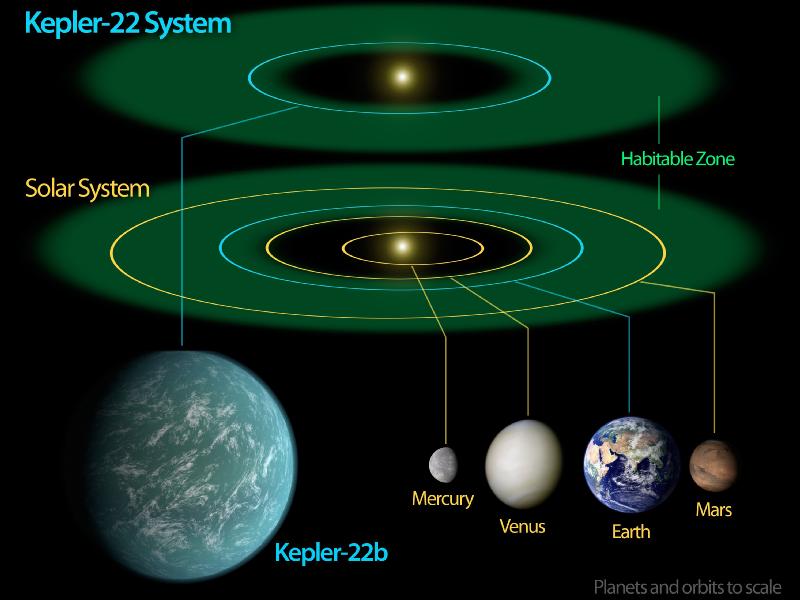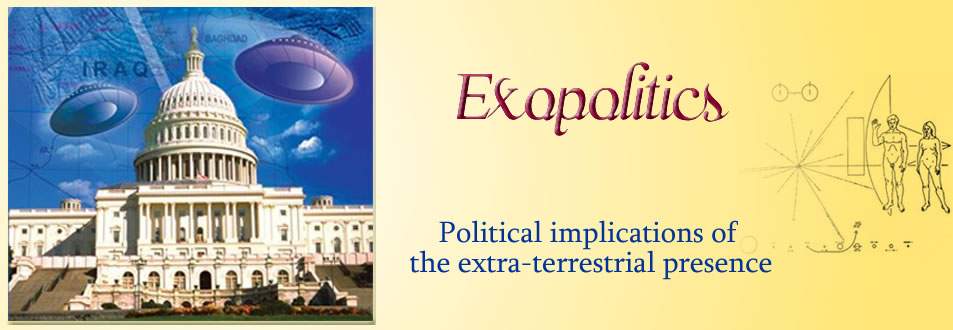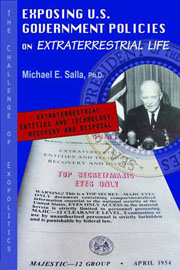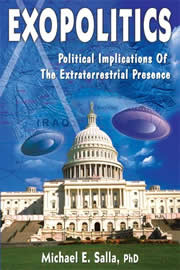Kepler confirms first exoplanet in habitable region - the exopolitical impact
 |
| This diagram compares our own solar system to Kepler-22, a star system containing the first "habitable zone" planet discovered by NASA's Kepler mission. Image credit: NASA/Ames/JPL-Caltech |
It's official - an earth-like planet in the habitable region of a distant solar system has just been confirmed to exist. The planet, Kepler-22b, sits in the so-called Goldilocks region of a solar system where it is neither too hot nor too cold for hosting life as we know it. Scientists associated with NASA's Kepler Space Telescope Project announced the discovery at a Press Conference at the Ames Research Center early on Monday. The scientific results will be published in the next edition of The Astrophysics Journal. The announcement takes the scientific community one step closer to announcing that the conditions for life can be found on numerous exoplanets scattered throughout the galaxy. More importantly, the announcement takes our world one step closer to realizing that extraterrestrial life is not only scientifically feasible, but likely exists throughout our vast galaxy with its more than 300 billion stars. The confirmation of the first habitable exoplanet opens the door to a comprehension discussion of the political and social consequences of the discovery of extraterrestrial life. Such discussion has been mainly limited to the field of exopolitics where researchers have examined claims that extraterrestrials not only exist, but have been secretly monitoring our world; and have even been visiting us since the dawn of the atomic age.
Even though the Kepler mission released news of the discovery of earth like planets in the habitable zone earlier in February 2011, these were only "candidate planets". Further observations were needed to confirm if what was seen was actually a planet or not. Confirmation did eventually arrive. Here is how William Borucki, a principal investigator at NASA Ames Research and team leader for the discovery of Kepler-22b, described the stunning confirmation:
Fortune smiled upon us with the detection of this planet … The first transit was captured just three days after we declared the spacecraft operationally ready. We witnessed the defining third transit over the 2010 holiday season…. Of the 54 "habitable" zone planet candidates seen so far, Kepler-22b is the first to be confirmed.
Put simply, Kepler-22b was included as a candidate exoplanet soon after the launch of the Kepler Mission in March 2009. Continued observations have confirmed its existence, and opened the door to further announcements of exoplanets to be found in the Goldilocks region of distant solar systems.
NASA's Press Release gave details about the confirmed exoplanet's location and orbit:
Kepler-22b is located 600 light-years away. While the planet is larger than Earth, its orbit of 290 days around a sun-like star resembles that of our world. The planet's host star belongs to the same class as our sun, called G-type, although it is slightly smaller and cooler.
The announcement was made at the Kepler Mission's inaugural science conference hosted at Ames from December 5-9. Here's how NASA described the present tally of exoplanets:
The Kepler team is … announcing 1,094 new planet candidate discoveries. Since the last catalog was released in February, the number of planet candidates identified by Kepler has increased by 89 percent and now totals 2,326. Of these, 207 are approximately Earth-size, 680 are super Earth-size, 1,181 are Neptune-size, 203 are Jupiter-size and 55 are larger than Jupiter.
According to Alan Boss, a Carnegie Institute researcher that is part of the Kepler Mission:
This discovery supports the growing belief that we live in a universe crowded with life ... Kepler is on the verge of determining the actual abundance of habitable, Earth-like planets in our galaxy'.
The confirmation of Kepler-22b as the first habitable exoplanet opens the door to the study of the social and political consequences of extraterrestrial life. Fortunately, some scientific institutions such as the Royal Society have endorsed such an exopolitical discussion. One likely impact of Kepler-22b is that more scientific institutions will follow the lead of the Royal Society. Eventually, the scientific community will need to examine the vast evidence accumulated over the last six decades, that extraterrestrial life is not only real and found throughout the galaxy, but they have been watching, and even visiting us, for a very long time.
© Copyright 2011. Michael E. Salla. Exopolitics.org
Permission is granted to include extracts of this article on websites and email lists with a link to the original. This article is copyright © and should not be added in its entirety on other websites or email lists without author's permission. For permission please contact: drsalla@exopolitics.org
Further Reading



